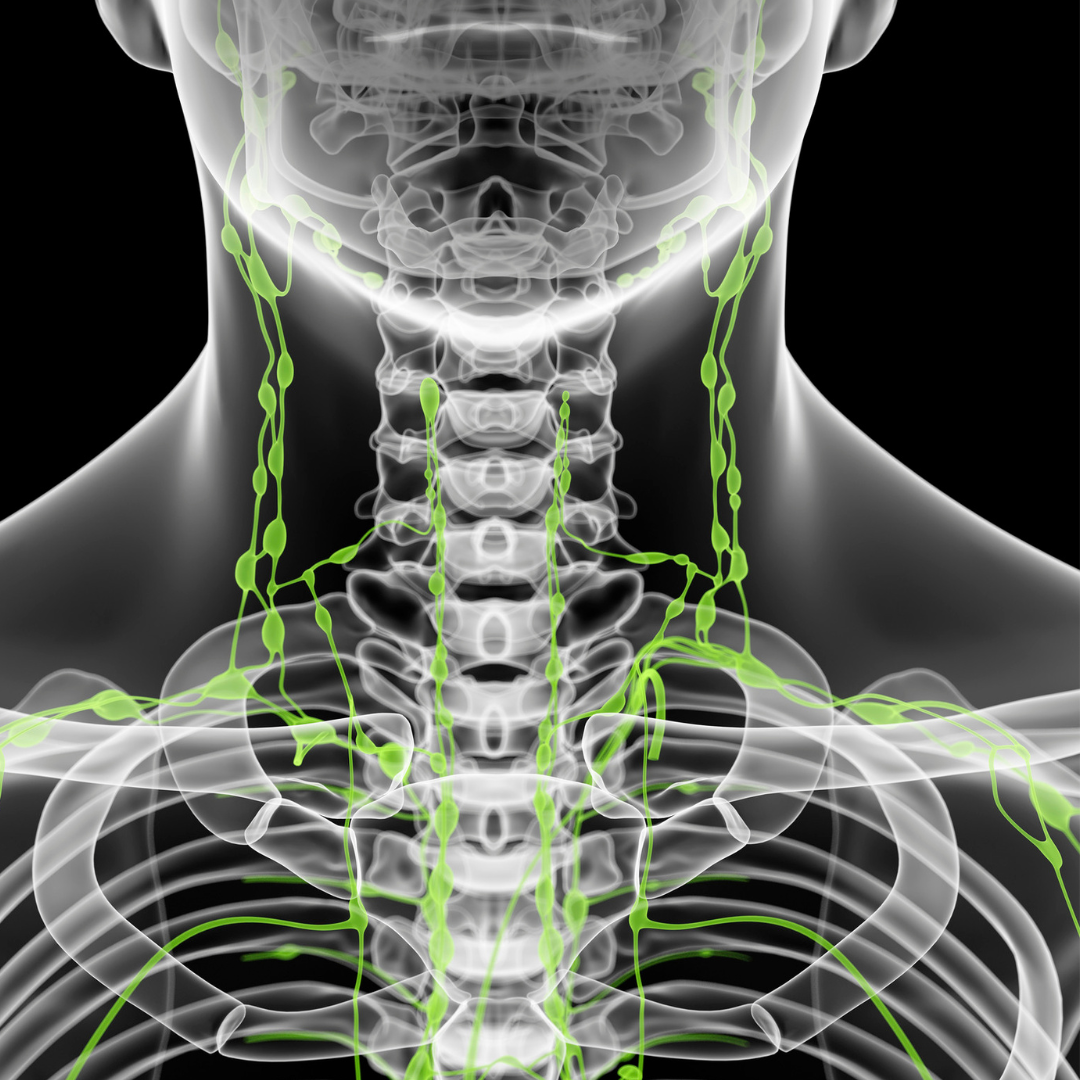Swollen lymph nodes: a primer
If your child develops swollen lymph nodes, it is easy to jump immediately to worrying about a worst case scenario: cancer.
But in the vast majority of cases, lymph node enlargement is just a signal of a healthy immune response, rather than something sinister. The goal of this post is to help provide some reassurance and information so you don’t have to google.
As always, if you remain concerned, call your pediatrician!
What are lymph nodes, anyway?
Lymph nodes are a part of our lymphatic system and are responsible for helping manage our body’s immune responses.
They are found in clusters and get bigger when they respond to environmental or other immune triggers.
This is because they make antibodies. After the illness or infection is over, they return to their original size.
Fun Fact: Tonsils are also made of lymph tissue, which is why they can get larger when you are sick
Nodes in children are usually more noticeable than in adults even at baseline. This is partly because they have slightly larger nodes, and also because they have less subcutaneous tissue (such as fat!) between the nodes and the skin.
Common locations that parents notice these nodes are around the head and neck, under the arms, or in the groin.
Particularly in younger children who have robust immune responses, it is not unusual to have enlargement of lymph nodes around the head and neck in association with common daycare respiratory viruses.
Important information
There are some pieces of information that are particularly helpful when trying to determine the cause (or the seriousness) of a swollen lymph node. These are the things you want to pay attention to:
Size
Normal nodes are typically 3-8mm in diameter. During an infection, they can increase to 1-2cm.
How it feels
In general, inflammatory nodes will move around under your fingers and feel rubbery. If they are fixed in place or hard, call your doctor.
Location
It isn’t uncommon for lymph nodes to enlarge in the approximate location of a trigger (for example, in the neck when you have a cold).
Certain locations are more concerning: lymph nodes right above the collarbone, inside the elbow, or behind the knee require a call to your doctor.
If you have enlarged nodes in multiple locations all over the body, this can be an indication of a more systemic or serious issue.
Duration
Lymph nodes can sometimes stay enlarged for 2-4 weeks in association with a trigger. If they have been present for longer than a month, they are worth having evaluated.
Pain
Inflammatory nodes responding to a trigger can be tender when pressed.
If a node is very tender (or seems to be causing increasing pain) or if it is painless, call your pediatrician.
Associated symptoms
Enlarged nodes associated with easy bruising, night sweats, fever > 1 week, weight loss, or excessive fatigue need to be evaluated.
Common causes of enlarged nodes
Both local and systemic illnesses can cause lymph node enlargement.
Viruses
Notorious for presenting with enlarged and tender nodes.
In pediatrics, common causes are Mono (caused by Epstein-Barr or Cytomegalovirus), Herpes, Adenovirus and potentially Measles or Rubella (these are less prevalent in the US).
Bacteria
Common infections such as strep throat, sinus and ear infections, or dental infections can also cause enlarged nodes.
Other infections
These are more rare, but can including Tuberculosis, fungi and parasites.
Inflammation
Children with inflammatory skin conditions such as eczema or poison ivy sometimes have node enlargement.
Autoimmune disease
These types of diseases are more rare in pediatrics, but can include Rheumatoid arthritis, Lupus, Kawasaki Disease and many more. When your pediatrician assesses your child, they consider these conditions and look for other associated findings.
Medications
Many medications, especially those used to treat seizures, can cause enlarged lymph nodes.
Cancer
Very rare cause of node enlargement in kids.
What to try for a tender lymph node
Depending on the cause of the nodes, most of the time we just monitor closely and treat any underlying symptoms. For example, a child with fever or pain or may benefit extra TLC and an over-the-counter pain medicine such as Acetaminophen/Tylenol or Ibuprofen/Motrin/Advil (dosing information available here).
If the nodes are slightly uncomfortable, a warm or cool compress may also help.
What can you expect at the doctor?
This is very dependent on the situation. Your physician will take a thorough history and do a physical exam, evaluating not only the node you are concerned about but looking for enlarged nodes (or “lymphadenopathy”) in other areas.
Sometimes swollen nodes require more of a work-up. This can include bloodwork, imaging (for example, an ultrasound), or a referral to a specialist depending on the likely cause of the swelling.
When to call the pediatrician
This is not a comprehensive list. In general, always err on the side of calling your pediatrician if you have any concerns about your child. There is a lot to be said for a parent’s gut instinct, and I promise: your pediatrician would rather you called!
If your child is not improving within a few days, or if they seem to be getting worse, call your pediatrician. Other concerning symptoms include:
Nodes with a diameter > 2 cm or those that are continuing to get bigger rapidly
Red, warm, very painful nodes
Large nodes present for > 1 month
Certain locations (as above)
Bruising, night sweats, weight loss, fevers, or other concerning systemic symptoms
Immobile, non-tender or irregularly shaped nodes
Swollen nodes in multiple locations over the body
Anything else tickling your spidey sense!!
“Common things are common” is a saying often heard in medicine.
Remember it.
When you’re spiraling, no matter what its about, the sinister explanation is usually not the right one.
My hope is that this article will be a good resource to prevent you from jumping to google the next time you notice a swollen node!




